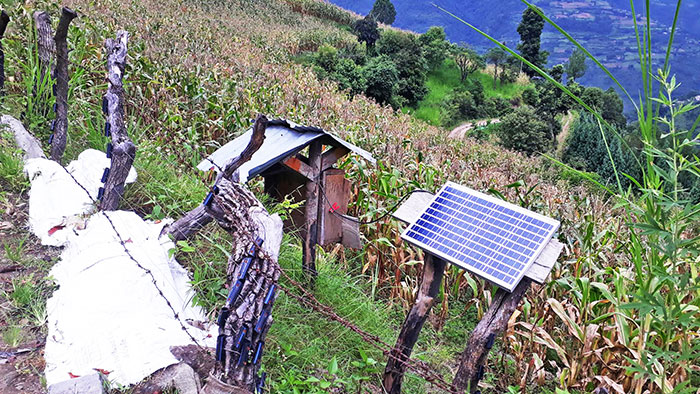Neten Dorji | Trashigang
Farmers of Kharmi and Gurka in Shongphu gewog, Trashigang are expecting a better harvest this year having beaten the denizens of the forests nearby.
Unlike in past, villagers no longer spend sleepless nights guarding their crops. Following a high rate of human-wildlife conflict, the gewog installed solar fencing in Kharmi and the two neighbouring villages.
With tangible outcomes, the initial suspicion of its effectiveness has faded gradually. Farmers all praise for it today.
Solar fencing benefited about 63 households in Kharmi and Gurka villages.
“After the solar fencing was installed, we don’t worry as much as we used to do in the past years,” Chanu, 70 said.
Chanu spent his entire life guarding the crops in the fields. Despite the hard work, wild boars would devastate their harvest in just one night.
Increasing instances of wildlife predation have led to more fallow lands across the country and also farmers depending more on imported rice.
“Life is much better now as we can devote more time to perform household chores and other farming activities,” Chanu said.
“We needn’t chase wild animals shouting day and night.”
Another villager, Tshewang Namgay said if not for the solar fencing, by the time they approach the harvest season, half the crops would be lost to wild animals.
“Besides the crops, the fencing has helped us to protect domestic animals too,” he said. “We could harvest 90 percent of what we cultivated in the fields.
“You lose interest in work when such things happen,” another villager, Sangay Choden said. “But since it is our only means of survival, we don’t have any options than imports.”
The 64-year-old farmer said that in the past crops were lost to wildlife despite sleepless nights of guarding in makeshift sheds that dot at every end of the field.
A villager said that it would be helpful if RNR increased the current-voltage or they are allowed to use electric current.
“It’d be helpful for both farmers and the government if they could provide us railing fencing instead of solar fencing,” he said. “Solar fencing does not last long.”
The only complaint is that the solar fencing is not so effective against monkeys.
Villagers said as monkeys were clever and that they knew that the solar fencing wire does not produce electric current continuously.
“The monkeys tend to touch the fencing and wait for a while before they quickly jump over the fence,” Dechen Dorji said.
“Sometimes porcupine penetrates into a field from space below electric wires and attracts our crops,” the villager said.
Those in the gewog without electric fencing have lost their crops to wild animals.
“When the wild boars couldn’t enter the solar fence, they attracted our fields,” a 45-year-old farmer from a neighbouring village said. “The solar fencing has proven effective. We hope the gewog would provide us too.”
Meanwhile, Gewog agriculture extension officer, Nim Dem said: “We have proposed another 20 kilometres of electric fencing in the CARLEP project in 2020- 2021 financial year.”
She said that releasing the benefits of electric fencing more villagers were coming up with requests.


